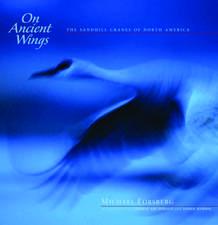Seabird Ecology: Tertiary Level Biology
Autor R. W. Furnessen Limba Engleză Paperback – 6 oct 2011
Din seria Tertiary Level Biology
- 15%
 Preț: 637.59 lei
Preț: 637.59 lei -
 Preț: 381.00 lei
Preț: 381.00 lei -
 Preț: 382.95 lei
Preț: 382.95 lei -
 Preț: 379.86 lei
Preț: 379.86 lei -
 Preț: 381.59 lei
Preț: 381.59 lei -
 Preț: 387.20 lei
Preț: 387.20 lei -
 Preț: 362.82 lei
Preț: 362.82 lei -
 Preț: 386.99 lei
Preț: 386.99 lei -
 Preț: 382.18 lei
Preț: 382.18 lei - 15%
 Preț: 633.02 lei
Preț: 633.02 lei -
 Preț: 386.00 lei
Preț: 386.00 lei -
 Preț: 379.09 lei
Preț: 379.09 lei -
 Preț: 385.47 lei
Preț: 385.47 lei -
 Preț: 387.20 lei
Preț: 387.20 lei - 18%
 Preț: 721.01 lei
Preț: 721.01 lei -
 Preț: 387.38 lei
Preț: 387.38 lei -
 Preț: 384.48 lei
Preț: 384.48 lei -
 Preț: 382.95 lei
Preț: 382.95 lei -
 Preț: 351.90 lei
Preț: 351.90 lei -
 Preț: 381.59 lei
Preț: 381.59 lei -
 Preț: 382.36 lei
Preț: 382.36 lei -
 Preț: 380.07 lei
Preț: 380.07 lei - 15%
 Preț: 636.45 lei
Preț: 636.45 lei -
 Preț: 381.59 lei
Preț: 381.59 lei - 15%
 Preț: 660.18 lei
Preț: 660.18 lei -
 Preț: 390.84 lei
Preț: 390.84 lei -
 Preț: 384.31 lei
Preț: 384.31 lei -
 Preț: 385.62 lei
Preț: 385.62 lei -
 Preț: 384.86 lei
Preț: 384.86 lei -
 Preț: 385.08 lei
Preț: 385.08 lei -
 Preț: 378.92 lei
Preț: 378.92 lei -
 Preț: 379.48 lei
Preț: 379.48 lei -
 Preț: 384.70 lei
Preț: 384.70 lei -
 Preț: 404.67 lei
Preț: 404.67 lei -
 Preț: 394.71 lei
Preț: 394.71 lei -
 Preț: 376.96 lei
Preț: 376.96 lei -
 Preț: 382.18 lei
Preț: 382.18 lei -
 Preț: 379.09 lei
Preț: 379.09 lei -
 Preț: 382.18 lei
Preț: 382.18 lei - 15%
 Preț: 637.59 lei
Preț: 637.59 lei -
 Preț: 385.47 lei
Preț: 385.47 lei -
 Preț: 380.07 lei
Preț: 380.07 lei -
 Preț: 387.38 lei
Preț: 387.38 lei -
 Preț: 380.25 lei
Preț: 380.25 lei -
 Preț: 418.76 lei
Preț: 418.76 lei
Preț: 381.00 lei
Nou
Puncte Express: 572
Preț estimativ în valută:
72.91€ • 77.96$ • 60.79£
72.91€ • 77.96$ • 60.79£
Carte tipărită la comandă
Livrare economică 18 aprilie-02 mai
Preluare comenzi: 021 569.72.76
Specificații
ISBN-13: 9781461292401
ISBN-10: 1461292409
Pagini: 180
Ilustrații: X, 166 p.
Dimensiuni: 152 x 229 x 9 mm
Greutate: 0.25 kg
Ediția:1987
Editura: Springer Us
Colecția Springer
Seria Tertiary Level Biology
Locul publicării:New York, NY, United States
ISBN-10: 1461292409
Pagini: 180
Ilustrații: X, 166 p.
Dimensiuni: 152 x 229 x 9 mm
Greutate: 0.25 kg
Ediția:1987
Editura: Springer Us
Colecția Springer
Seria Tertiary Level Biology
Locul publicării:New York, NY, United States
Public țintă
ResearchCuprins
1. Introduction.- 2. Seabird Life Styles.- 2.1 What is a seabird?.- 2.2 Habitat selection.- 2.3 Mating systems.- 2.4 Colonial breeding.- 2.5 Life-history theory.- 2.6 Comparative seabird life histories.- 2.7 Conclusions.- 2.8 Interactions with man.- 3. Seabird Feeding Ecology.- 3.1 What seabirds eat.- 3.2 How seabirds feed.- 3.3 Where seabirds feed.- 3.4 Variation in foraging success with age.- 3.5 Studying seabird communities.- 4. Regulation of Seabird Populations.- 4.1 Introduction.- 4.9 Regulation of populations: the theories.- 4.3 The evidence: are seabird populations regulated?.- 4.4 The evidence: density-dependent effects.- 4.5 Conclusions.- 5. Interactions with Fisheries.- 5.1 Introduction.- 5.2 Estimating food consumption by seabirds.- 5.3 Simulation modeling.- 5.4 Direct measurement of seabird metabolism.- 5.5 Changes in ecosystem structure.- 5.6 Conclusions.- 6. Monitoring Marine Environments.- 6.1 Introduction.- 6.2 Plastics.- 6.3 Oil.- 6.4 Organochlorines.- 6.5 Heavy metals.- 6.6 Radionuclides.- 6.7 Monitoring fish stocks.- 6.8 Monitoring seabird numbers.- 7. Seabirds as Pests.- 7.1 Conflict with fisheries and agriculture.- 7.2 Detrimental effects on other species.- 7.3 Gulls and the urban environment.- 7.3.1 Urban nesting.- 7.3.2 Gulls and refuse tips.- 7.3.3 Bird strikes.- 7.4 Disease transmission.- 7.5 Control of seabird pests.- 8. Seabird Conservation Requirements.- 8.1 Exploitation of seabirds by man.- 8.2 Habitat destruction.- 8.3 Predation by introduced alien animals.- 8.4 Other factors.- References.




